
What Is That Mysterious Sailboat?
A few weeks back, we received word from a local sailor that an odd-looking sailboat had mysteriously appeared in Richmond. We hot-footed it over there, but by the time we arrived the boat had just as mysteriously disappeared. All we had to go on were a couple of photos and the boat’s name, Reprobate. But being the intrepid reporters we are (and generally nosy) we asked around and eventually found our way to the source of the mystery. The odd-looking boat is a sharpie (yes, that is actually a type of boat as well as everyone’s favorite marking pen) and is owned by Chris Gibbs, a Bay Area local who who spends a large part of the year in Florida.
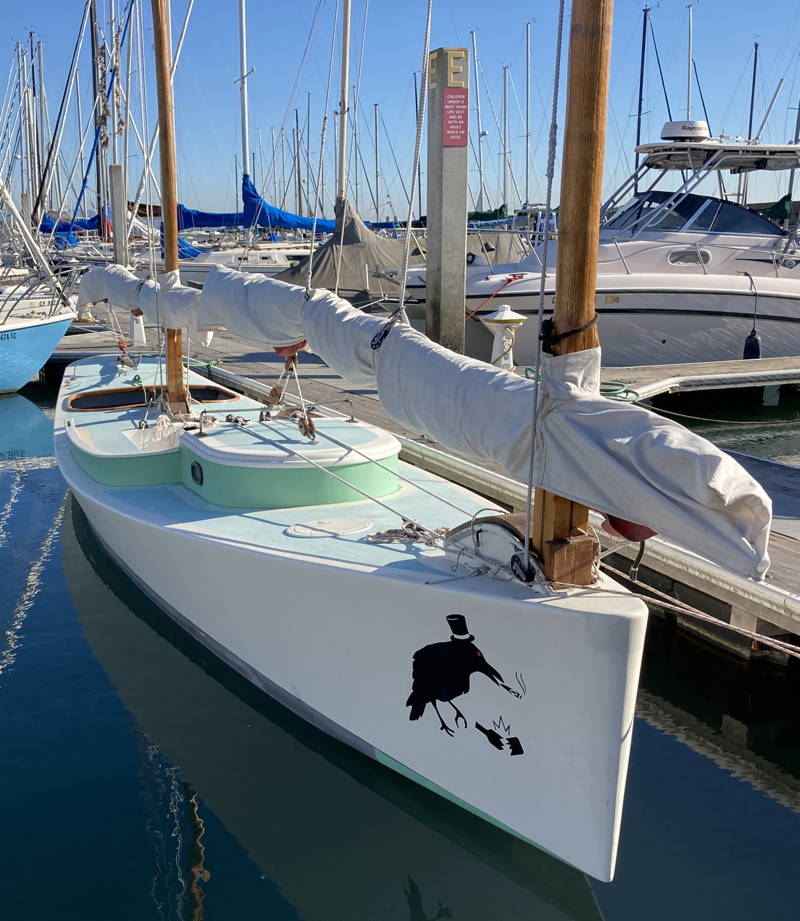
According to Wikipedia, a sharpie is a type of hard-chined sailboat with a flat bottom, extremely shallow draft, a centerboard, and straight, flaring sides. And according to Chris, the sharpie originated in the oyster grounds of New Haven, CT, and Long Island, NY.
“Apparently these sharpies were built and used in the latter part of the 19th century and the beginning of the 20th century. They were easy to build in the back yard or on an empty lot. They were absolutely flat-bottomed, and I believe they were mostly rigged with a lug mainsail — a bit like what you’d find on a San Francisco Pelican.”
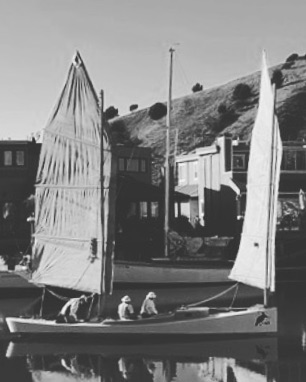
He also says, “It has a MONSTER-sized centerboard that is activated by a winch and some unfortunate person who doesn’t know any better.
“I understand the idea was that guys who were working their oyster beds would sail out light, and then use what looked like giant salad tongs to harvest the snacks. These would be loaded into bushels. This boat, in theory, was a ‘100-bushel boat.’ They would fill the boat, hoist sail, and scoot home.”
Chris knows his boat’s history and tells us it was built close to where he and his wife Nicola live, in Key Largo, FL. “This particular boat was built, up the street, in the mid-1990s, I believe. It was put together at a boatyard owned by an older man named David Westphal. He was advanced in age and came down with pretty severe Parkinson’s disease, and sold the yard.
“Curiously, this boat is rigged as a schooner with two masts of equal length. Ready for this? Both masts are made from bamboo. Like … no kidding, ‘Key West bamboo!’ And each mast is rigged with a full-battened, Chinese junk sail. Both are traditional red.”
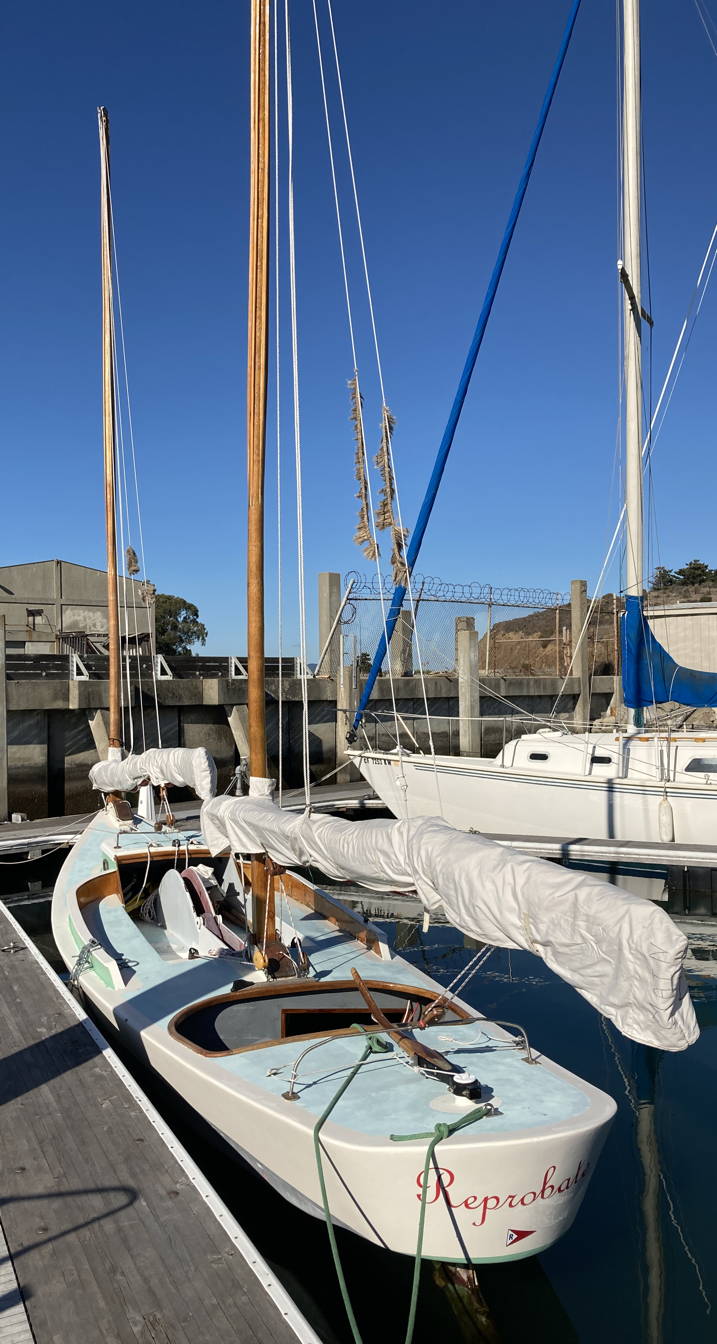
“The shocking thing about the sharpie is that it turned out to be extremely fast for what it is. Stories abound … ‘stinky, drunk fishermen entering fancy yacht club races and winning.’ Most were subsequently banned from racing. No beating expensive fancy boats when you look, smell, and act like that. So naturally I would be a fan.” (Apparently, anyone who knows Chris can vouch for this.)
“Truthfully, all of that made me roll eyes and think, ‘When I get back to the West Coast — two real sails, carbon sticks, maybe wishbones! Yeah!’ Then my friend Kim and I put the thing together at the Richmond Yacht Club, and he and a few real talented folks got on board and sailed it around. Holy Hat! Smiles all around. It went pretty fast.
“I think we were all of the same mind concerning the bamboo and the tanbark and junk rig, but really? It worked really well, and the only problem was that we couldn’t really figure out why it was working.”
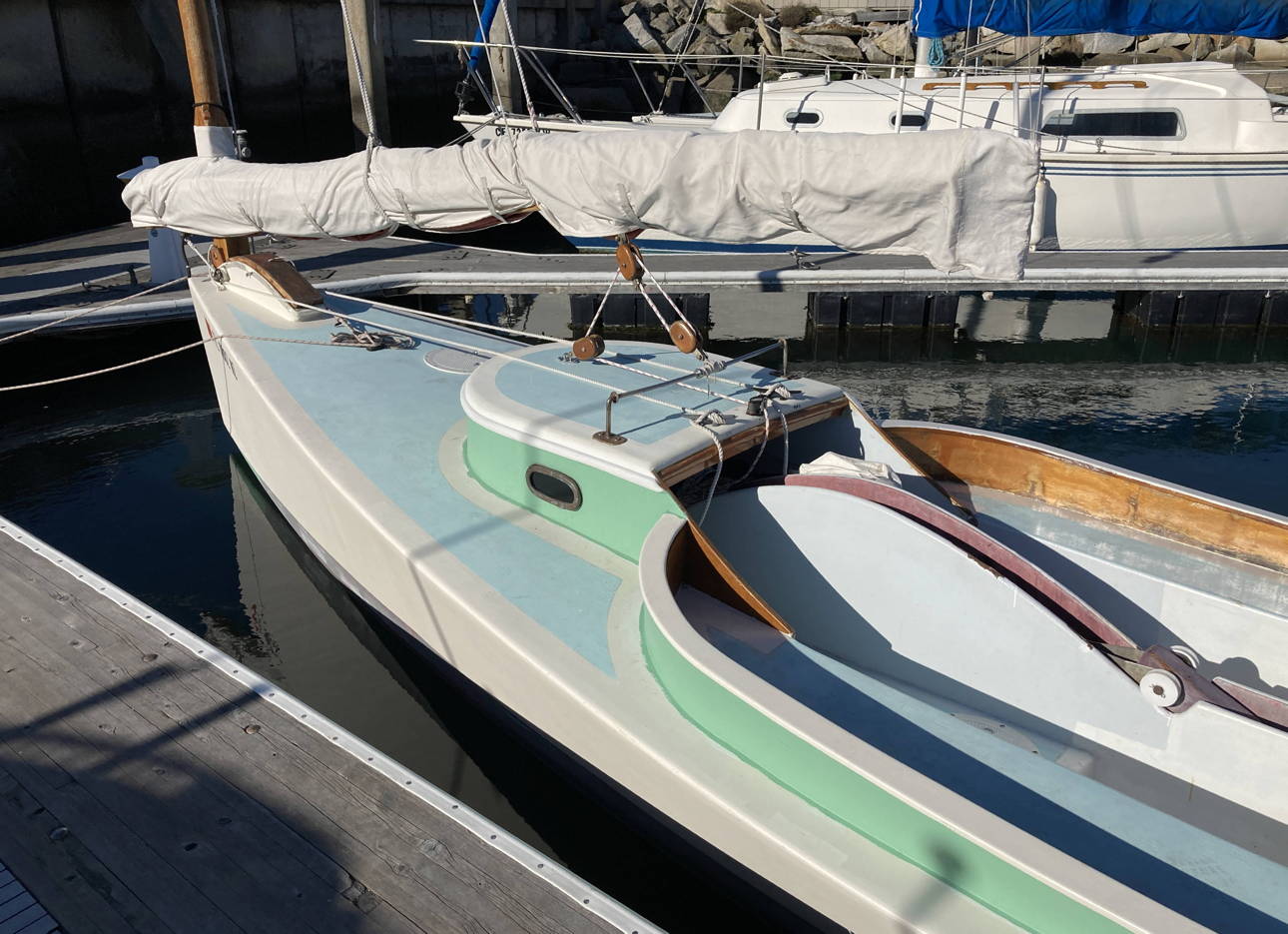
“For instance, I went out with Kim, and he is up forward and announces, ‘OK, now I’m going to take in two or three mighty armloads of sheet. The telltales look good; now let’s see what happens!’ In the sail came, telltales still flying as they should. I guess at that point we opened the beer and decided not to hurt ourselves trying to figure it out — get our best ‘hippie’ on and just let things ‘be’ and drink beer.”
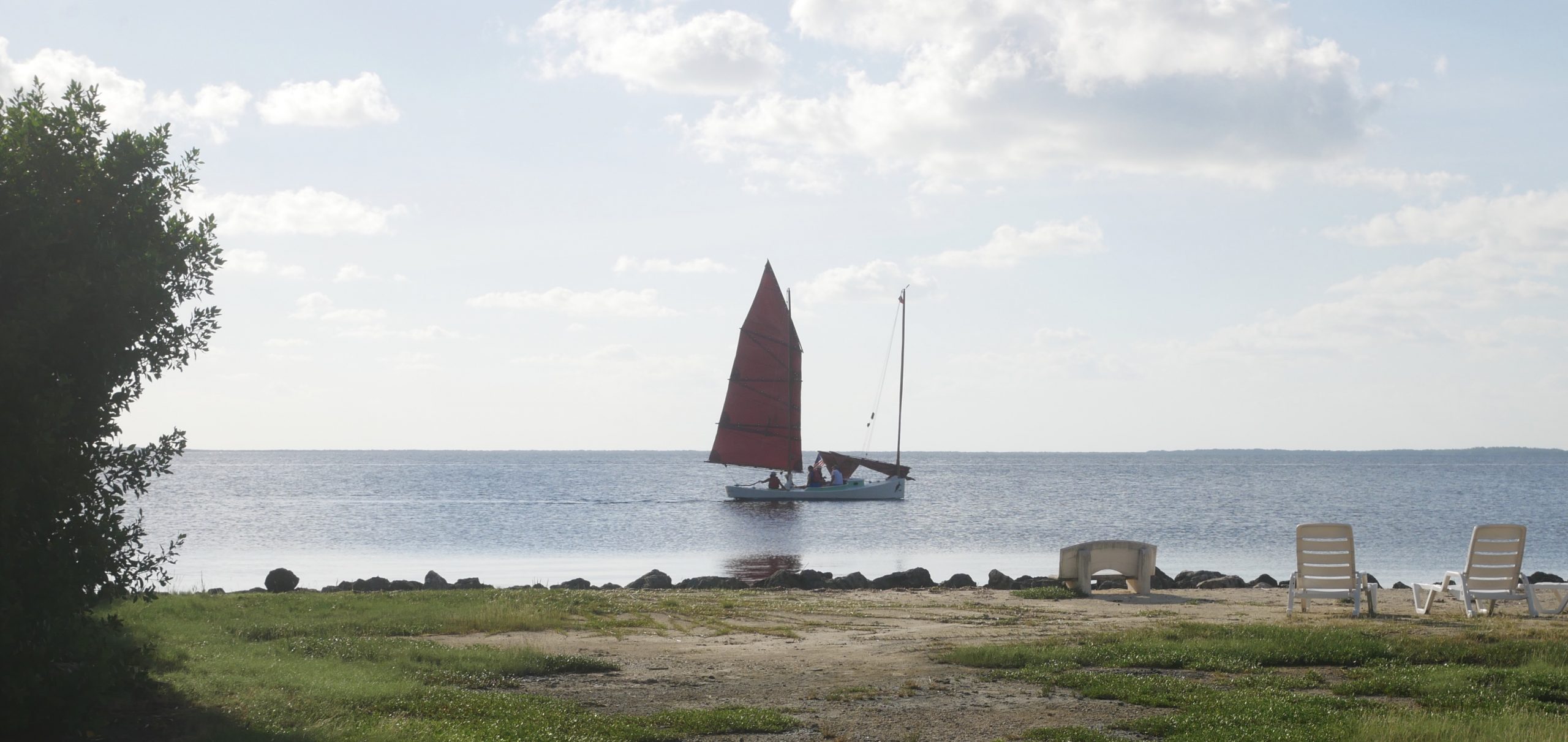
Chris has quite a distinguished sailing background. He grew up in California, “mostly at the Vallejo Yacht Club” — where his father was a commodore — and has been “racing one boat or another” since he was around 10 years old.
“I was lucky enough to race a ton of PHRF [Performance Handicap Racing Fleet] and ocean stuff with his [father’s] Santana 30 Obsessed, and I then was honored to become a difficult-to-remove crew for Bob Klein’s Leading Lady after I was old enough to drive.”
As an adult, Chris has owned a variety of boats — Cal 20s, Ranger 23s, an Aphrodite 101, and currently a Wyliecat 39, Checkered Past. He and Nicola have taken Checkered Past up the Delta and down the West Coast, spent almost a summer in Catalina, raced to it Hawaii, and sailed it in Northern Europe — “as my wife is German.”
But for now, both boats are tucked in at home.
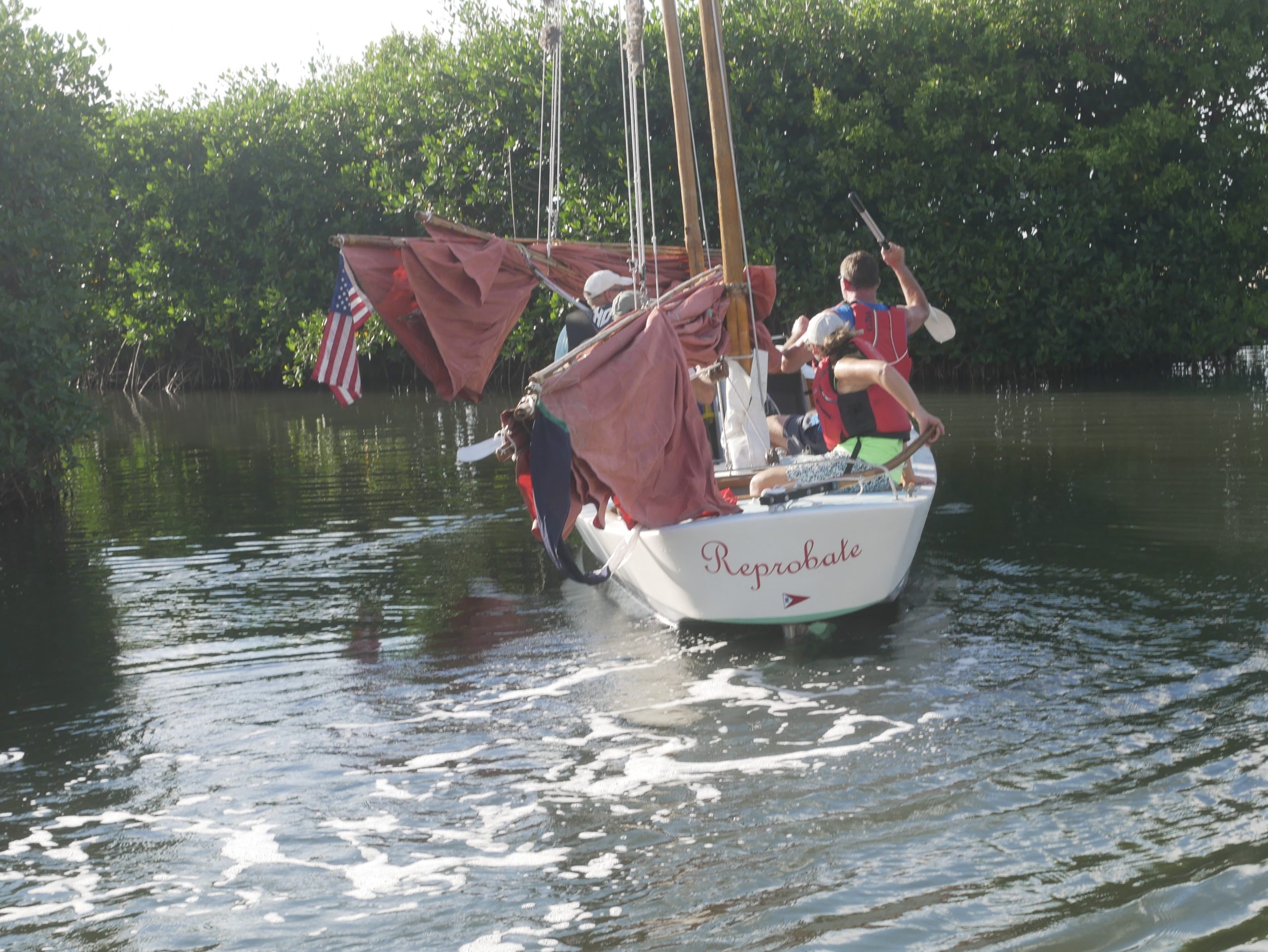
“Reprobate is up in Plumas County at my cabin right now. We are in Key Largo for the winter. When we get back to California in the springtime, Reprobate will reappear at Richmond.”
When spring rolls around, if you’re out sailing or walking the docks and see Chris and Nicola aboard Reprobate or Checkered Past, be sure to say, “Hi.” Maybe you can ask Chris how Reprobate got its name . . .
Bay Area Boatbuilder Launches 72-ft Saildrone
Bay Area boatbuilder Saildrone has launched a new vessel, the Saildrone Surveyor — a 72-ft uncrewed surface vehicle (USV) equipped for high-resolution mapping of the ocean seafloor. And according to the press release, it is the world’s most advanced uncrewed surface vehicle.
The Surveyor carries a sophisticated array of acoustic instruments for both shallow- and deep-water ocean mapping; the Kongsberg EM 304 multibeam echo sounder is capable of mapping the seafloor down to 7,000 meters below the surface. The Surveyor also carries two state-of-the-art acoustic Doppler current profilers (ADCPs), the Teledyne Pinnacle 45 kHz ADCP and the Simrad EC150-3C ADCP, to measure ocean currents and understand what is in the water column. The Surveyor is also equipped with the Simrad EK80 echo sounder for fish stock assessments.
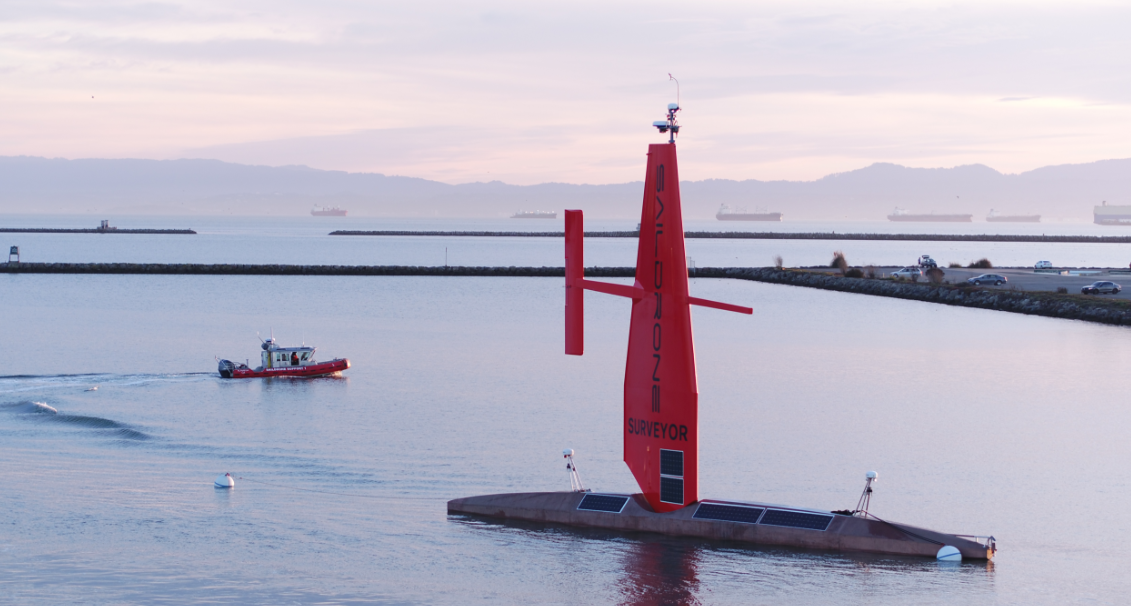
The Saildrone Surveyor was launched from Saildrone headquarters in Alameda, CA, this month. It coincides with the start of the United Nations Decade of Ocean Science for Sustainable Development and presents a paradigm shift in enhanced seabed mapping. Ocean mapping is currently done with very large and expensive crewed ships. The Saildrone Surveyor is a scaled-up version of the Saildrone Explorer, the 23-foot wind- and solar-powered saildrone, which has been proven in numerous operational missions for science, ocean mapping, and maritime security, covering more than 500,000 nautical miles from the Arctic to the Antarctic.
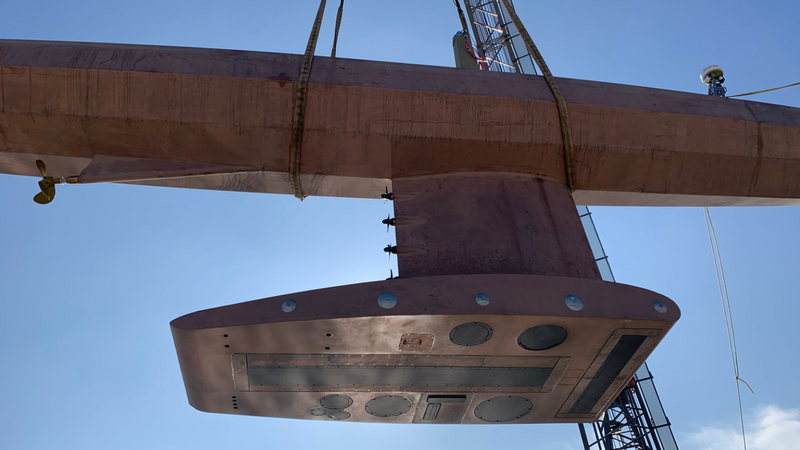
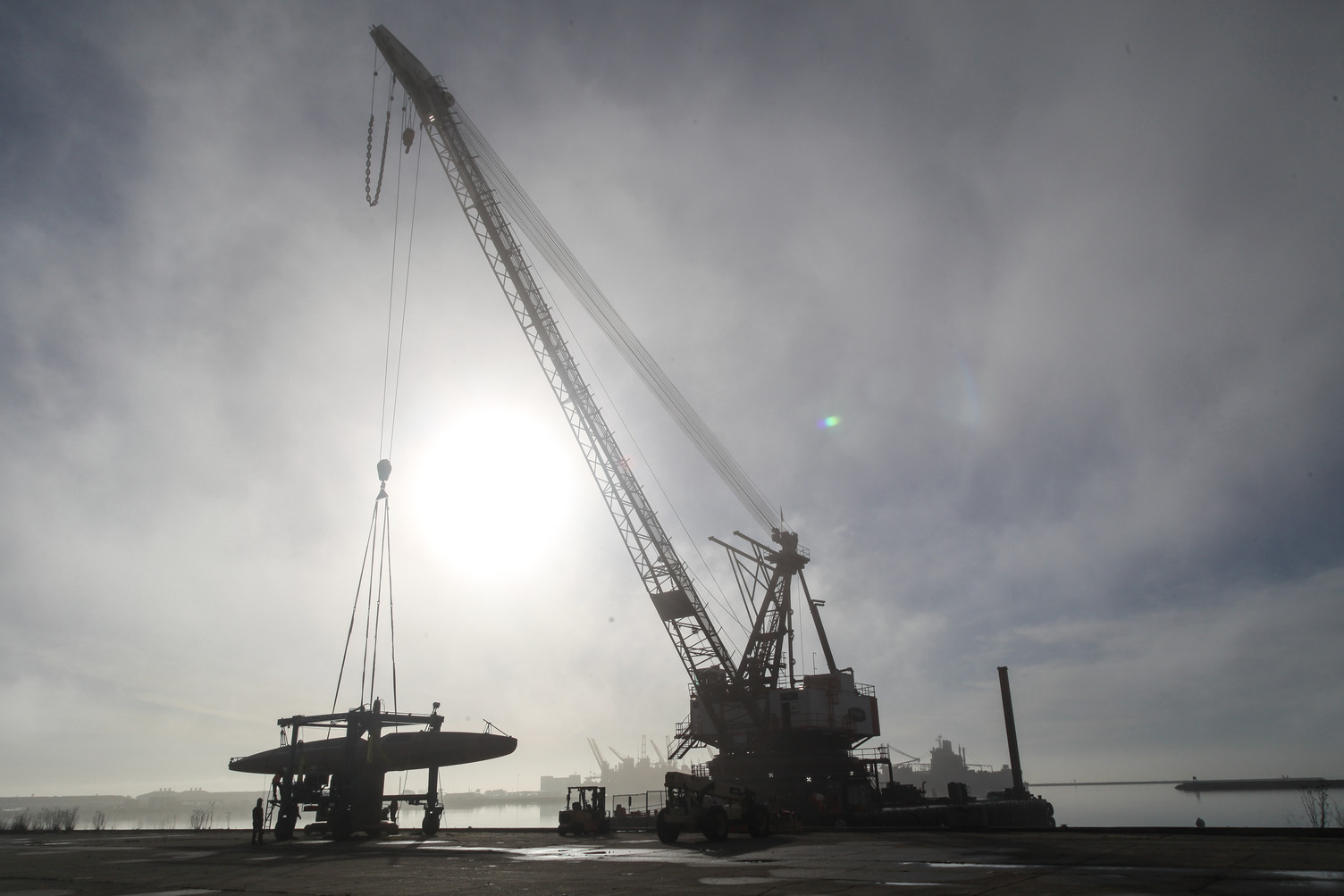
Like the Explorer, the Saildrone Surveyor is uncrewed and uses renewable solar energy to power its robust sensor suite. The Surveyor delivers an equivalent survey capability, but at a fraction of the cost and carbon footprint of a traditional survey ship and without putting human health and safety at risk.
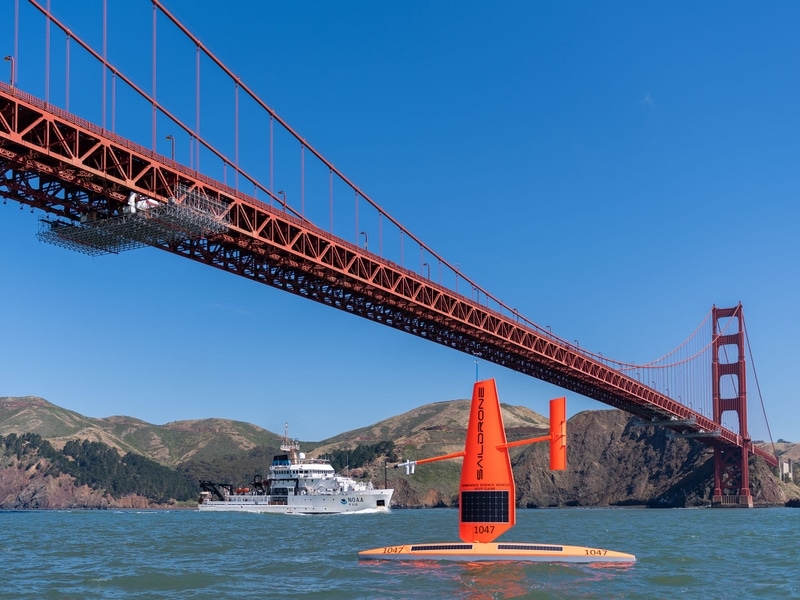
“The launch of the Surveyor is a huge step up, not just for Saildrone’s data services but for the capabilities of uncrewed systems in our oceans,” said Richard Jenkins, founder and CEO of Saildrone. “For the first time, a scalable solution now exists to map our planet within our lifetime, at an affordable cost.”
With the Surveyor, Saildrone aims to accelerate many of the global mapping initiatives that seek to provide better insights into Earth’s processes: Seabed 2030 is a UN-backed joint initiative between GEBCO (the General Bathymetric Chart of the Oceans) and the Nippon Foundation to produce a definitive map of the world’s oceans by 2030, and the 2019 White House Memorandum on Ocean Mapping calls for a national strategy for mapping, exploring, and characterizing the US Exclusive Economic Zone.
“We are excited to see the launch of the Saildrone Surveyor,” said Alan Leonardi, director of the NOAA Office of Ocean Exploration and Research. “NOAA is supporting the development and testing of this new uncrewed system because we are confident it will expand the capability of our existing fleet of ships to help us accelerate in a cost-effective way our mission to map, characterize and explore our nation’s deep ocean territory, monitor valuable fisheries and other marine resources, and provide information to unleash the potential of our nation’s Blue Economy.”
Less than 20% of Earth’s oceans have been mapped using modern, high-resolution technology—we know more about the topography of the Moon and Mars than we do about our own planet. And yet, knowing the shape of the seabed is critical to understanding ocean circulation patterns, which affect climate and weather prediction, tides, wave action and tsunami wave propagation, sediment transport, underwater geohazards, and resource exploration.
Saildrone’s fleet of USVs has logged more than 10,000 days at sea in some of the most extreme weather conditions on the planet. In 2020, Saildrone completed its first Arctic mapping mission on behalf of NOAA’s National Ocean Service, and in 2019, Saildrone completed the first autonomous circumnavigation of Antarctica, collecting critical carbon data related to climate science.
Check out Saildrone’s video of the Surveyor being launched on the Bay.
Division of Boating and Waterways Boater Card
Finding Peace in Random Acts of Sailing
While we’ve missed many of the regattas and organized events normally available on the Bay, we’re continuously reminded that they’re not the only reason we sail. The freedom and escape from the chaos ashore are two of the most alluring reasons to head out on the Bay. It’s what keeps people sailing and sending us stories of great days on the water. We were walking in Tiburon and saw boats rafted up in Belvedere Cove, boats tied up for ‘takeout’ picnics on the docks at Sam’s, and boats doing their disorganized best to avoid each other while just going for a shorthanded afternoon sail. Just doing random acts of sailing.
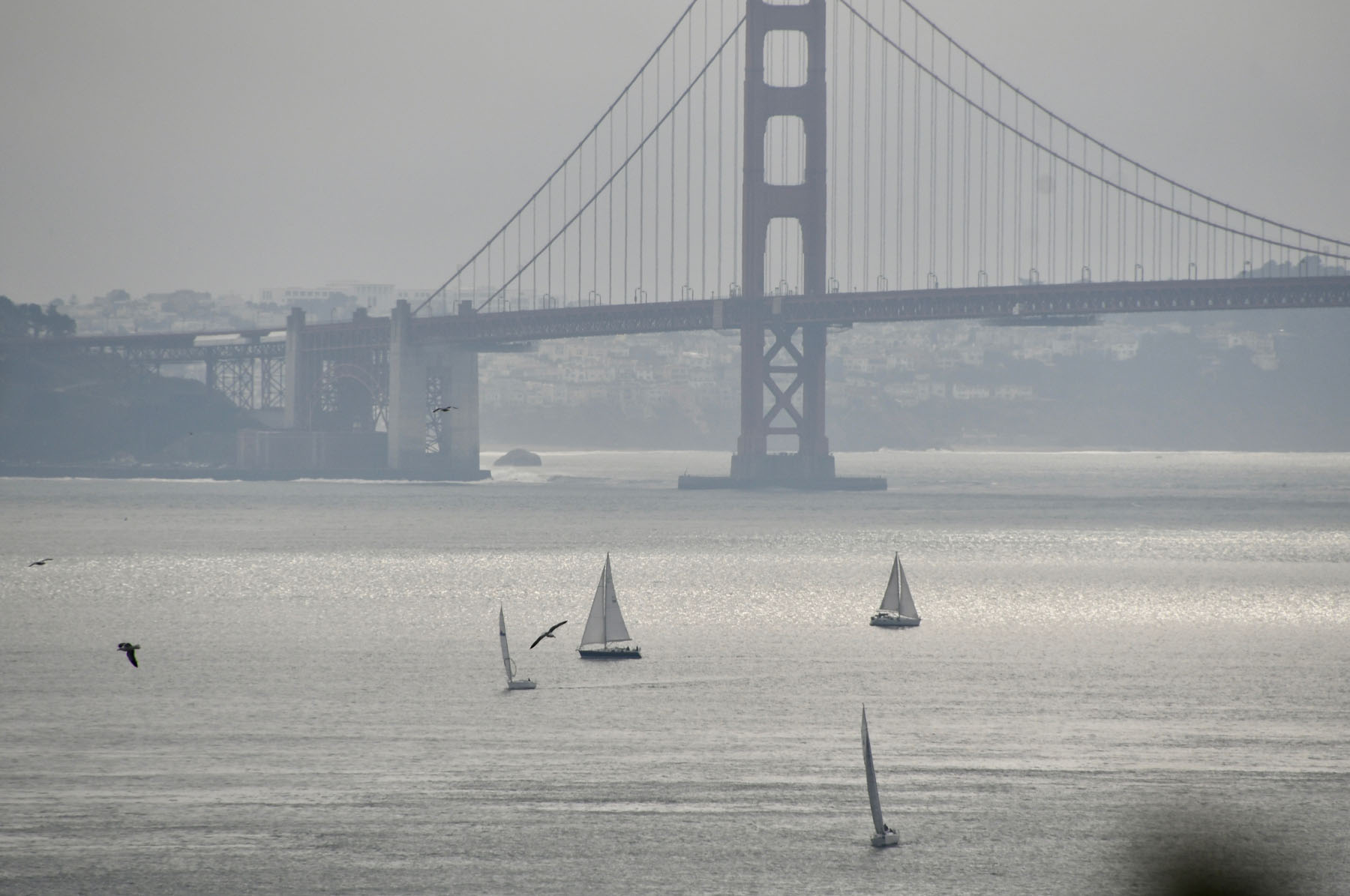
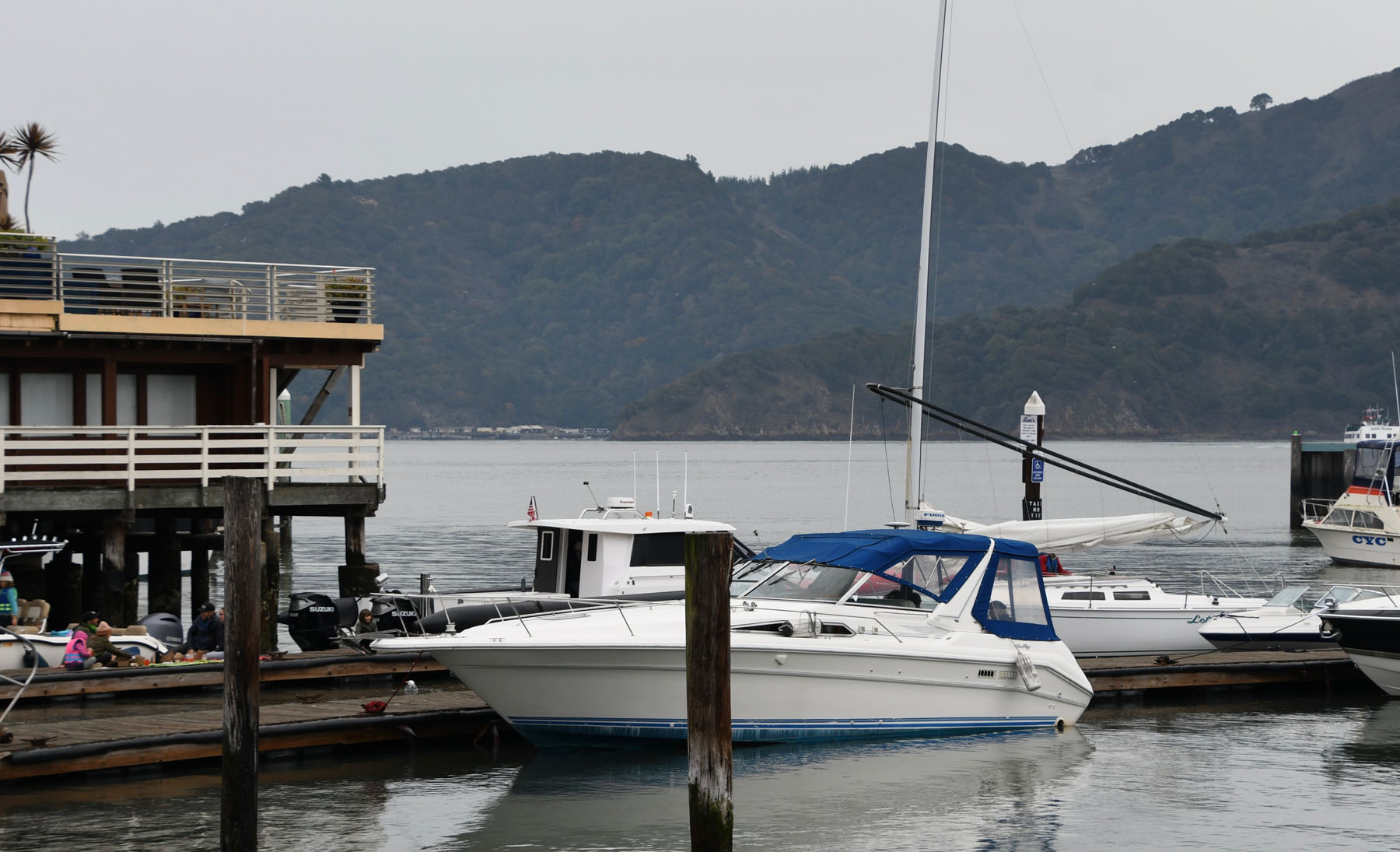
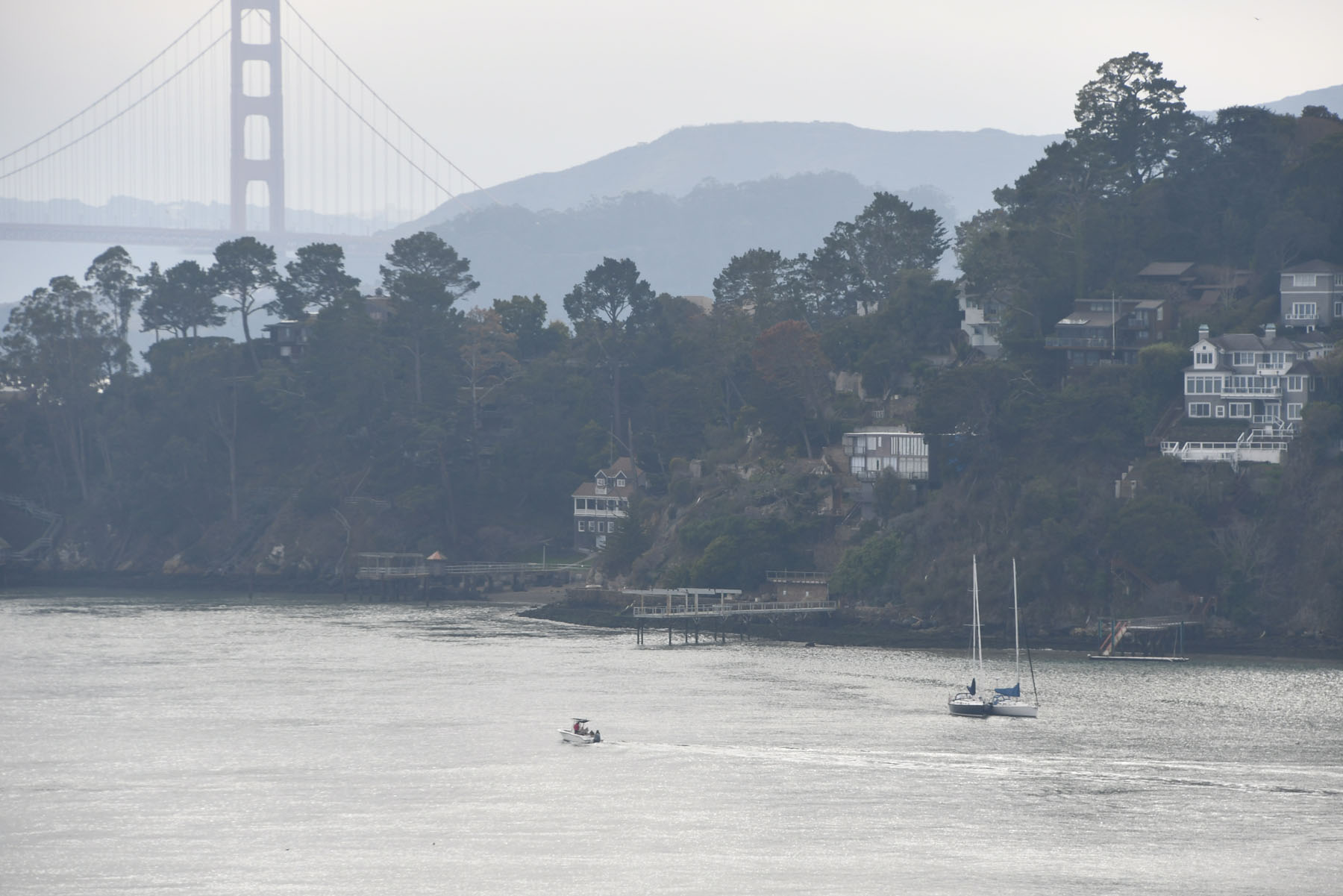
We have to admit being addicted to watching the drama of the Vendée Globe unfold and making sure it’s one of the first things we check upon waking up in the morning, and the last before turning in at night. But beyond that, we also love the simple stories such as the one we ran Friday of Dusty Adams sailing his Farallon 29 Ol’ Wayne out of Moss Landing, and the earlier story of Mike Pouliot sailing his Yankee 30 Emerald out the Gate to catch crabs. Did you get some pics of your sailing-escape this weekend? Send them our way.
Prada Cup Round Robins Start Tomorrow
Ready or not!
It’s all on for the Prada Cup Challenger ‘trio’ as the dance begins tomorrow evening.
The three Challengers, Luna Rossa Prada Pirelli, Ineos Team UK and American Magic, will begin a series of elimination Round Robins tomorrow at 9 p.m. PST that will determine who faces Emirates Team New Zealand for the America’s Cup Finals Match beginning on March 6.
Over the next two weeks, a winner will be determined among the three teams. That team will receive a bye until the Prada Cup Finals beginning on February 13. The remaining two teams will face off on January 29 in a best-of-seven series to pick who will face off against that team. There’s a break between the different elimination rounds to allow for boat modifications.
Don’t expect to see the same boats line up that we saw just a few short weeks ago. So, if your date looks a little different than when you picked them up, they do. No, it is not a full moon! Much has changed, and not just with appearances.
Forget all the chitter-chatter and squabbling about proprietary racecourse graphics and visuals or whether there will be pre-regatta practice races. There were!
How about the America’s Cup Arbitration Panel?
In typical fashion, they were working full-time as the lawyers and rule-mongers have been about as busy as the builders and crews with multiple hearings in the last few weeks alone.
With issues on many fronts, be it clock management or mark and boundary positioning, there was enough indecision on the plate to order up a couple of practice days courtesy of an Arbitration Panel decision just a few days ago to further test the Race Management System (RMS).
But back to the water — at least for a minute!
First off, the British are better, way better. Just when they were ready to be written off and ditched, the culmination of a million little things has apparently come together in just the nick of time.
Team leader and skipper Ben Ainslie was able to push the boat hard through its maneuvers and it appeared that the foil mechanisms were much more adaptive to the different tactics of the day. The team definitely had pace, which hadn’t really been lacking, it was just everything else.
Plus, I’m sure the new main didn’t hurt, and it appears that their radical skeg got a bit of a ‘shave’ too.
The Italians have been rather quiet, which is unlike them, so that means that they must be up to something!
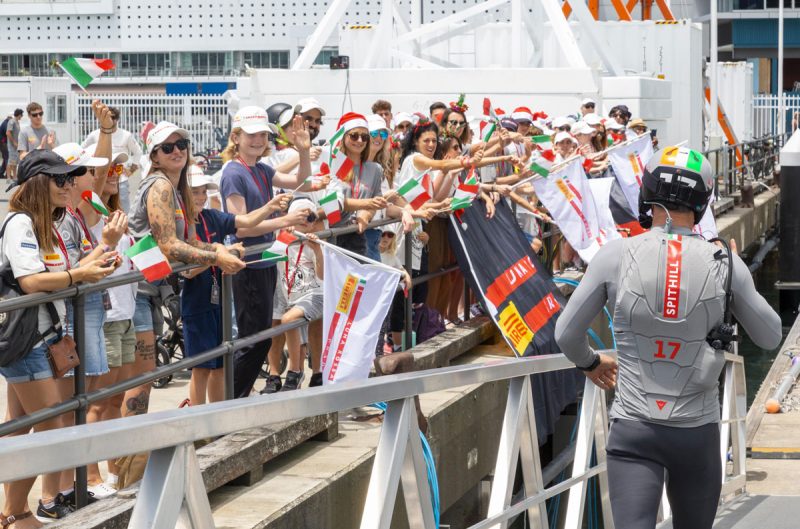
But the news of the day was carried by the Kiwis in dramatic fashion. In a breezy southwesterly and optimum wind range from 16 to 18 knots, Emirates Team New Zealand helmsman Peter Burling was pressing downwind against INEOS Team UK when, in an apparent jibe gone wrong, Te Rehutai took a massive nosedive and catapulted onto its side. There was no apparent damage, and the foiling monohull was quickly righted with the aid of the team’s chase boat.
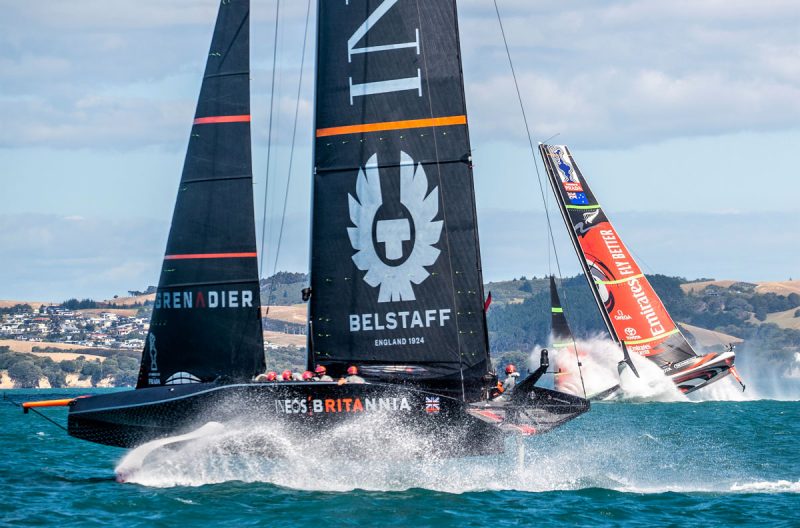
“We got a little too high in the jibe and stopped pretty quick,” said Burling. “It was a pretty big load case on the bow when the boat hit, so we just wanted to do some checks, but everything functionally on the boat was working pretty well. That same kind of maneuver on the cat in Bermuda and you’d be in hundreds of pieces.”
“Obviously the capsize wasn’t ideal, but it’s a fantastic opportunity to really push ourselves and push the boat hard against an opponent,” added ETNZ skipper Glen Ashby.
Patriot created a little ‘American magic’ last week with a surprising visual difference in their hull with a new, larger bustle/skeg that’s far deeper than before.
Unlike that of other teams, American Magic’s skeg/bustle does not run all the way to the back of the boat and stops around half to two thirds back from the bow after recent surgery on its bottom sides. The desired effect is to create better aerodynamics between the hull and the water’s surface. The modified end plate will hopefully increase the aerodynamic efficiency of the rig. Together with the extension of the bustle, it’s meant to develop increased power in lighter winds.
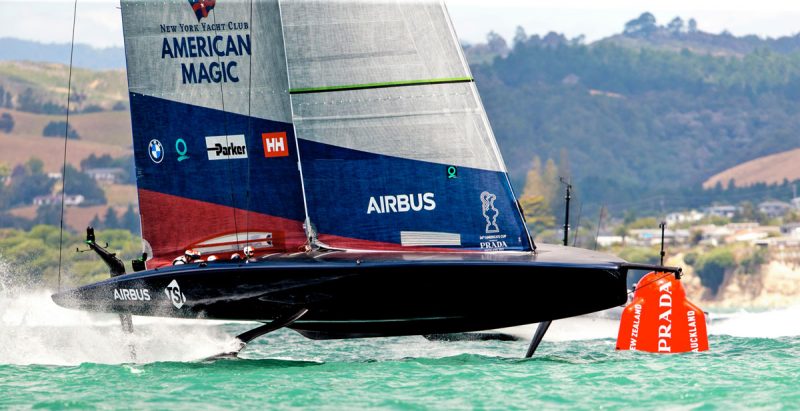
With American Magic, it’s not all about what’s underneath, as their boat has sprouted some radical-looking ‘batwing’ battens on the upper area of its mainsail. It is highly likely that the modified hull was meant to work in conjunction with the turbo effect of the reinforced main. These ‘batwings’ have nothing in common with the batwing that appeared on the back ends of both BMW Oracle and Alinghi’s gigantic multihulls in their America’s Cup match in 2010.
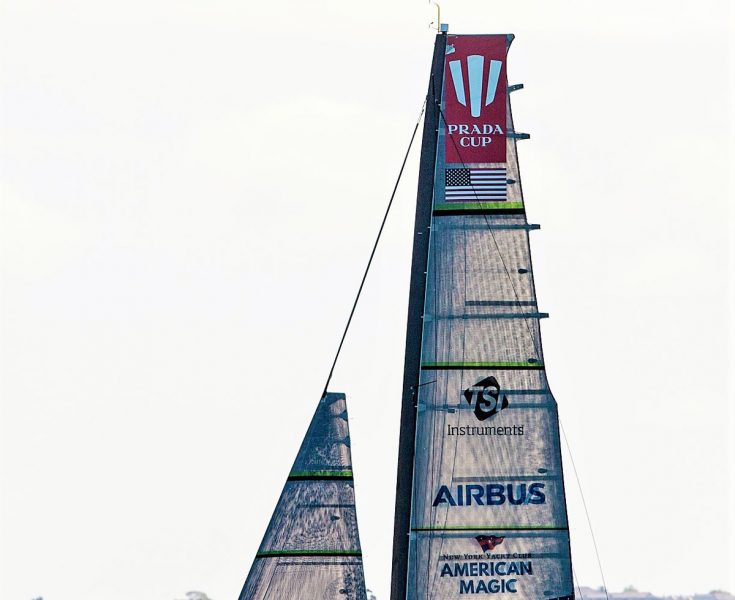
In addition, American Magic/NYYC was more than outspoken with their concerns over the RMS systems, so much so that they led the effort in front of the Arbitration Panel in advocating that, “The race management system is a complex electronic system supplied and provided by the organizers, and it includes the media system on board each AC75.
“All competitors have experienced serious failures, which fundamentally curtailed their ability to race and foil the boat safely,” stated American Magic, which also wanted to address data privacy concerns. “It is vitally important that all the data from Patriot that the organizers receive during these rehearsals is treated with absolute confidentiality.”
Coutts Initiates Legal action
If there weren’t enough off-the-water drama to satisfy the pundits’ appetites, SailGP’s CEO and America’s Cup legend Sir Russell Coutts piled on with a late-breaking legal action against Sir Ian Taylor’s company Animation Research during the broadcast of the pre-Christmas racing.
Coutts has warned that if graphics used by Taylor’s company are used in the upcoming Prada Cup or later in broadcasting the 36th America’s Cup, High Court action alleging breach of copyright will be filed. The graphics in question are the ones that are used in what is known as the popular LiveLine system developed for Larry Ellison and Coutts by Stan Honey in the 2013 America’s Cup.
Taylor has said that it could, “seriously impact the coverage of both the upcoming Prada Cup and the America’s Cup itself.”
In response, Coutts told the New Zealand Herald that “We are simply seeking to safeguard IP (intellectual property) that we invested millions of dollars to develop over the last decade.”
Back to what counts for the Prada Cup
Who’s up and who’s not? Look for American Magic and Luna Rossa Prada Pirelli to be at the top, with the vastly improved Brits right there. This will be a nail-biter until the last race, and suddenly the Kiwis don’t look so formidable.
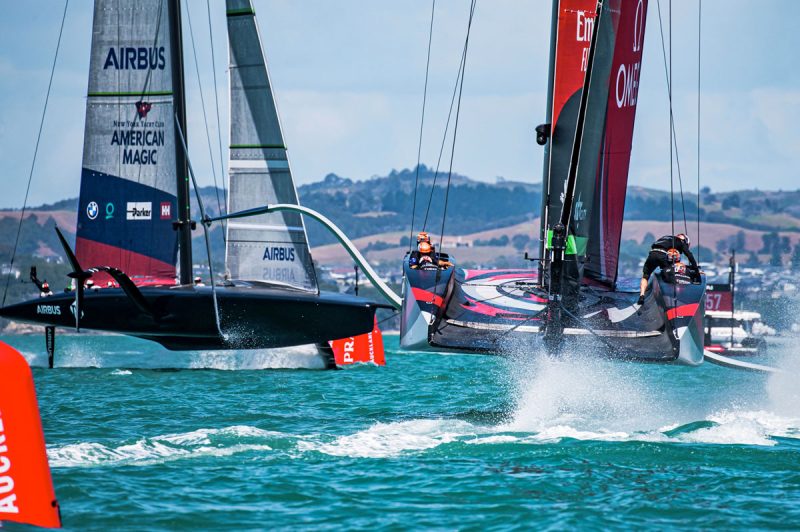
All Kiwi helmsman Peter Burling has to do is look back into America’s Cup history at Dennis Conner. Sometimes it’s a lot easier to win the Auld Mug than it is to defend her! Just saying…
See www.americascup.com.

